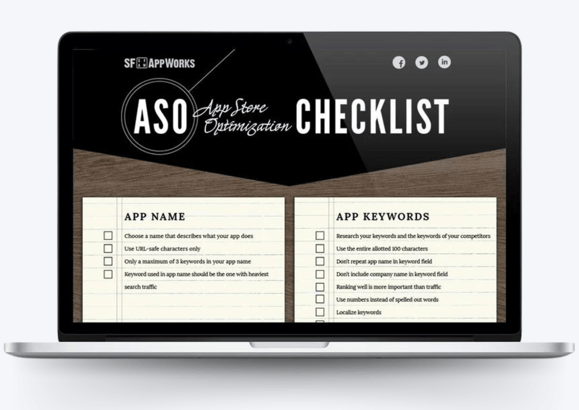The most common method for downloading new apps is app store browsing and searching. Up to 63% of app discoveries are made via this route, according to a research conducted by Forrester Research, Inc. Optimizing a mobile app is an entirely different scenario as compared to optimizing a website. ASO is the process by which you can improve app store search rankings.
If you look at the actual algorithms, web search engine optimization depends on an established process that includes ‘on-page’ metadata. This means that your title tags, content, and description would be included in it. It also includes the off-page backlinks that Google utilizes to authenticate and see how relevant your keywords, topics, and content are.
The more backlinks you have, the more your page will be viewed as relevant by Google. However, when you look at the App Store Optimization, there is a completely different approach. Therefore, the tactics used in ASO vs SEO are very different.
Apple doesn’t consider the backlinks or anything outside the App Store for developing a search algorithm. It considers the keywords submitted by you in the app approval process as well as user reviews. They are scrutinized by people to make sure they are relevant. If the metadata isn’t totally correct, there is a lower chance of the app being found.
However, this is not all because 83% of apps are still invisible, according to adjust. Beyond learning how to position your app, you also need to have a strong grasp of mobile marketing. Marketers shouldn’t depend on previously popular tactics such as chart boosting (purchasing downloads in enormous quantities to get the app on top of the category level charts) because the majority of app users are searching for apps that meet their specific needs, not necessarily, the most downloaded.
There are some key components of ASO that are based on important marketing metrics for mobile that need to be considered:
- Cell phone users’ behavior – Users display a different behavior in App Stores when contemplating which app to download
- Mobile Search Semantics – Users put forward their search queries. These search queries differ in mobile as compared to the web
- Mobile Trends – These are mostly related to the features of the app and are different within App Store search
- Competitors – The “opponents” contending for phrases or keywords in App Stores are different from the web
- Search Algorithms – The algorithms used by App stores are different from those used by Google Web searches.
- Moving aside the search semantics and user behavior, the aspect of competition and the level of difficulty differ very much in App Stores. Marketers have to compete for rankings against other apps (not websites).
- So, what does all this mean for all of you app marketing professionals? It means that you should study App Store Optimization not Search Engine Optimization techniques to gain a higher app ranking and increase the number of downloads from your target customers.
App Store Optimization in Practice
You have to aim to make your app rank as high as possible in search with the help of keywords, optimization of title, naming, imagery and ratings.
Below are the key areas of an app store page that can be optimized for improved ratings and increased downloads.
Name
- Keywords
- Description
- Icon
- Updates
- Screen shots
- Ratings
- Preview video
The following section will cover keywords and updates. While all other categories are important these two are the first items you need to master in order to bring the rest to life.
Keywords
App names that include keywords rank 10.3% higher than apps that do not. Therefore, your app name should include keywords that have the heaviest search traffic.You can use App Annie, Sensor Tower, AppTweak and MobileDevHQ to get help with app keyword analytics.
Tips for choosing keywords
- Include keywords which have the heaviest search traffic
- Try to use all 100 characters
- Don’t reiterate the app name as a keyword
- Avoid using company name as a keyword
- Keywords should be updated and optimized regularly
- Use singular or plural forms of the word whichever is easier to rank for
- Research keywords that have been used by competitors
- Give more importance to words that are easier to rank for independent of their traffic volume
- Represent figures with numbers, not words
- Localize keywords
- Make use of long-tail words
App Updates
App users are always on the lookout to find something interesting about an app. After all, they need a reason or a number of reasons to download your app. App updates can contribute to this effectively.
Tips for ensuring your app updates are read
- Fill the ‘What’s New’ section
- Prompt users to leave positive reviews
- Encourage users to provide ongoing feedback
WHAT’S NEXT?
The areas that fall in the category of branding image will be discussed in a follow-up blog. Followed by the topics of screen shots and video which will be covered in a third and final blog post in this series. We also encourage you to check out our ASO checklist downloadable here. A free resource to help ensure you’ve covered all your ASO bases. Or reach out to us, SF AppWorks: A San Francisco Digital Marketing Agency for a free marketing consultation.
Get a Free Copy of 'App Store Optimization Checklist'


COMMENTS